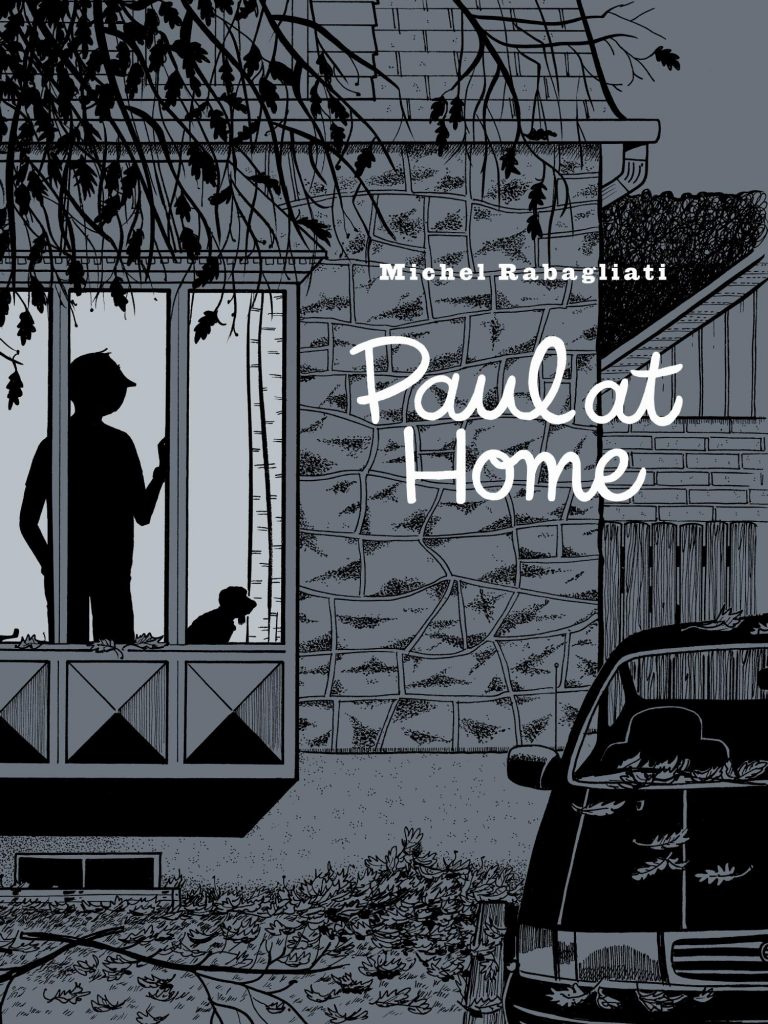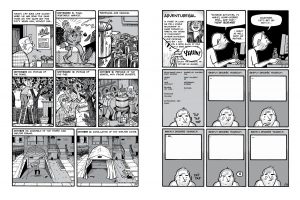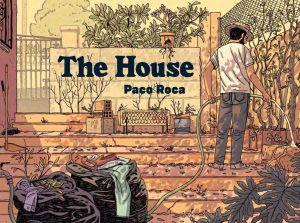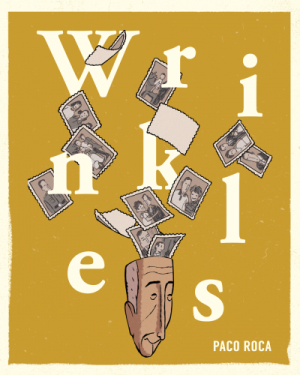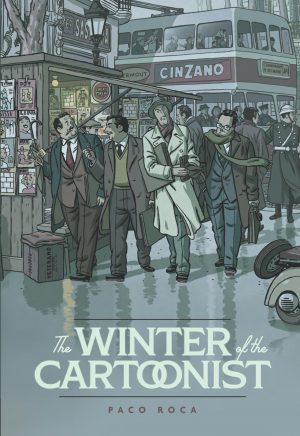Review by Frank Plowright
Over six previous graphic novels Michel Rabagliati has skated through his past, occasionally counterpointing that with his present circumstances. Some elements have remained consistent, such as an appreciation for design, while growing up and change has regularly featured in a reflective way. Paul at Home is a year in the life, set in the present, or more precisely, in the recent past, allowing for the creative process.
Since we last saw him in Paul Goes Fishing, Paul’s circumstances have changed. It’s now the 21st century, he’s 51 and no longer married, the circumstances mentioned in passing, and primarily via illustration rather than as a story sequence. We see the pile of books about divorce next to his bed, and the regretful glance into what was once his daughter’s bedroom, the decorations unchanged. This, along with Paul’s health, is contrasted with his mother’s circumstances, it being noted that his parents eventually divorced, and accompanied by her assurance that he doesn’t want to be a single pensioner.
As ever, Rabagliati dwells on appreciation of small moments and subtle effects that pass others by. It’s noted by a relatively still and silent panel separating two others, indicating a pause for thought, so much of the story being told via illustration. The constant referencing of design remains another Rabagliati signature. Fonts are highlighted with a name check for their designer, although interestingly he has no time for graffiti art, and Rabagliati is a serial user of panels spotlighting an interesting architectural feature or novel sign to indicate a location. Here, he extends to fetishising his drawing tools during a sequence illustrating himself working on Paul Joins the Scouts. It’s all very layered, and also quite melancholy. While earlier books have their sad, indeed tragic moments, the balance has generally been toward the joyous, yet as Paul considers being alone there’s a sombre mood throughout.
Because he deals so well in subtlety, Rabagliati’s comedy skills are under-rated. A combination of both is supplied by the right hand sample page, funny enough in itself, but the subtlety is that it’s a rare page of a Rabagliati book that isn’t somehow about him, yet changing the format induces mind-freeze. The dry observations tumble out, here sometimes exaggerated by Paul’s dissatisfaction with his life, sometimes by his feeling out of touch with the present. This isn’t to diminish the sad experiences detailed, from the pain of dental treatment to his mother’s deteriorating health. It’s all supplied in precise visual detail, the background elements often as important as the foreground in the flat storytelling style.
If at times Rabagliati, through Paul, seems too self-obsessed, it’s generally accompanied by a greater sense of perspective that makes him immensely readable. For all the sadness of Paul at Home the final pages acknowledge a universal renewal in what’s been another absorbing read.
Several times in passing Rabagliati mentions Red Ketchup, by French Canadian creators Pierre Fournier and Réal Godbout. Why have their hilariously manic action thrillers never been translated into English?
